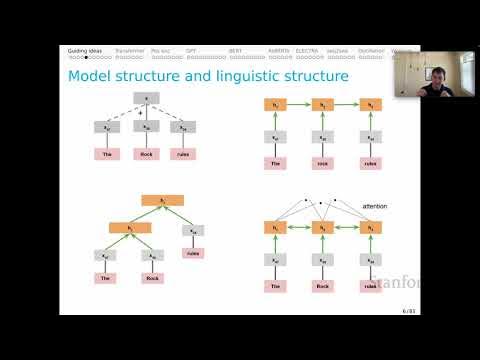Lessons From Fine-Tuning Llama-2
Summary
TLDRThis video script delves into the valuable insights gained from fine-tuning open-source language models like LLaMA 2. The speakers, Kurosh and Arthur, shed light on the importance of fine-tuning for addressing format issues and improving performance on niche tasks. They emphasize the crucial role of data curation, consistent training and inference formats, and robust evaluation pipelines. Additionally, they highlight the advantages of parameter-efficient fine-tuning techniques like LoRA, balancing model quality with memory footprint and serving efficiency. The talk provides a comprehensive exploration of the challenges, learnings, and best practices for successfully fine-tuning large language models.
Takeaways
- 😀 Open source language models like LLaMA offer cost-effectiveness and data control compared to proprietary models like GPT-4, while recent progress has narrowed the performance gap.
- 🎯 Fine-tuning language models addresses the issue of models not following the desired output format or intent, enabling better control over their behavior.
- 📂 Data curation and quality are crucial for fine-tuning, ensuring clean and representative examples that capture the intended model behavior.
- ⚖️ Consistency between training and inference data formats is essential for effective fine-tuning and model performance.
- 🧪 Proper evaluation pipelines, potentially leveraging more powerful models like GPT-4, are vital for accurately assessing fine-tuned model performance.
- 🚀 Ray Train provides a powerful and user-friendly framework for distributed training of language models, enabling efficient fine-tuning.
- 💡 Fine-tuning excels at tasks like SQL generation and functional representation, where models learn to map input formats to desired outputs without deep reasoning.
- ⚡ Parameter-efficient fine-tuning techniques like LoRA (Low-Rank Adaptation) offer memory and storage efficiency benefits while maintaining good performance.
- ⚙️ LoRA is sensitive to hyperparameters like learning rate and benefits from techniques like prompting for improved stability during training.
- 🏆 While full parameter fine-tuning may still have a slight edge in quality, LoRA offers significant advantages in serving efficiency and memory footprint.
Q & A
What is the motivation behind fine-tuning open source language models?
-The motivation is to address the problems of hallucination and not following the intended format with open source language models. Fine-tuning can help these models better adhere to specific formats and reduce hallucinations for niche tasks.
Why is data curation and formatting important for fine-tuning language models?
-High-quality curated data that captures the intended behavior is crucial. The way the data is formatted during training should be consistent with how the model will be used during inference, as inconsistencies can lead to incorrect or unexpected outputs.
How does Ray Train assist in distributed fine-tuning of language models?
-Ray Train provides a simple, Pythonic API for orchestrating multi-process training workloads. It seamlessly integrates with other Ray libraries like Ray Data for distributed data ingestion, and offers features like automatic distributed environment setup, job scheduling, and observability tools for debugging.
What are the key factors to consider when setting up an evaluation pipeline for fine-tuned language models?
-It is important to set up a reliable and scalable evaluation pipeline that accurately measures the model's performance. This may involve techniques like using more powerful models like GPT-4 to create mock test cases or automate parts of the evaluation process.
What tasks are particularly well-suited for fine-tuning open source language models?
-Tasks that involve following specific formats, such as natural language to SQL query generation or functional representation tasks, are well-suited for fine-tuning. These tasks do not necessarily require deep understanding of the world, but rather learning to map input formats to output formats.
What is parameter-efficient fine-tuning, and how does it differ from full parameter fine-tuning?
-Parameter-efficient fine-tuning, like LoRA (Low-Rank Adaptation of LMs), involves fine-tuning only a small subset of additional parameters instead of the entire model's parameters. This reduces memory footprint and checkpoint sizes compared to full parameter fine-tuning.
How does LoRA (Low-Rank Adaptation) work for parameter-efficient fine-tuning?
-In LoRA, the pre-trained weights are frozen, and two low-rank matrices A and B with far fewer parameters are added to the model during fine-tuning. This significantly reduces the number of trainable parameters while still allowing the model to adapt to the new task.
What are some advantages of using LoRA for fine-tuning language models?
-LoRA allows for fine-tuning large language models on smaller hardware instances due to its reduced memory footprint. It also results in much smaller checkpoint sizes, making it more efficient for serving fine-tuned models in production.
What factors can affect the performance and stability of LoRA fine-tuning?
-The learning rate and prompting techniques used during training can impact the stability and performance of LoRA fine-tuning. Additionally, LoRA's performance may vary depending on the task complexity, with more challenging tasks like mathematical reasoning potentially seeing a larger quality gap compared to full parameter fine-tuning.
What is the trade-off between LoRA and full parameter fine-tuning in terms of model quality and efficiency?
-While full parameter fine-tuning may still have an edge in model quality (1-3% relative accuracy), LoRA offers significant advantages in terms of memory footprint and serving efficiency. The choice depends on whether model quality or serving efficiency is the higher priority for a given use case.
Outlines

This section is available to paid users only. Please upgrade to access this part.
Upgrade NowMindmap

This section is available to paid users only. Please upgrade to access this part.
Upgrade NowKeywords

This section is available to paid users only. Please upgrade to access this part.
Upgrade NowHighlights

This section is available to paid users only. Please upgrade to access this part.
Upgrade NowTranscripts

This section is available to paid users only. Please upgrade to access this part.
Upgrade NowBrowse More Related Video

Should You Use Open Source Large Language Models?

Step-by-Step Guide to Building a RAG LLM App with LLamA2 and LLaMAindex

What is LoRA? Low-Rank Adaptation for finetuning LLMs EXPLAINED

Using Ollama to Run Local LLMs on the Raspberry Pi 5

Introducing Llama 3.1: Meta's most capable models to date

Stanford XCS224U: NLU I Contextual Word Representations, Part 1: Guiding Ideas I Spring 2023
5.0 / 5 (0 votes)